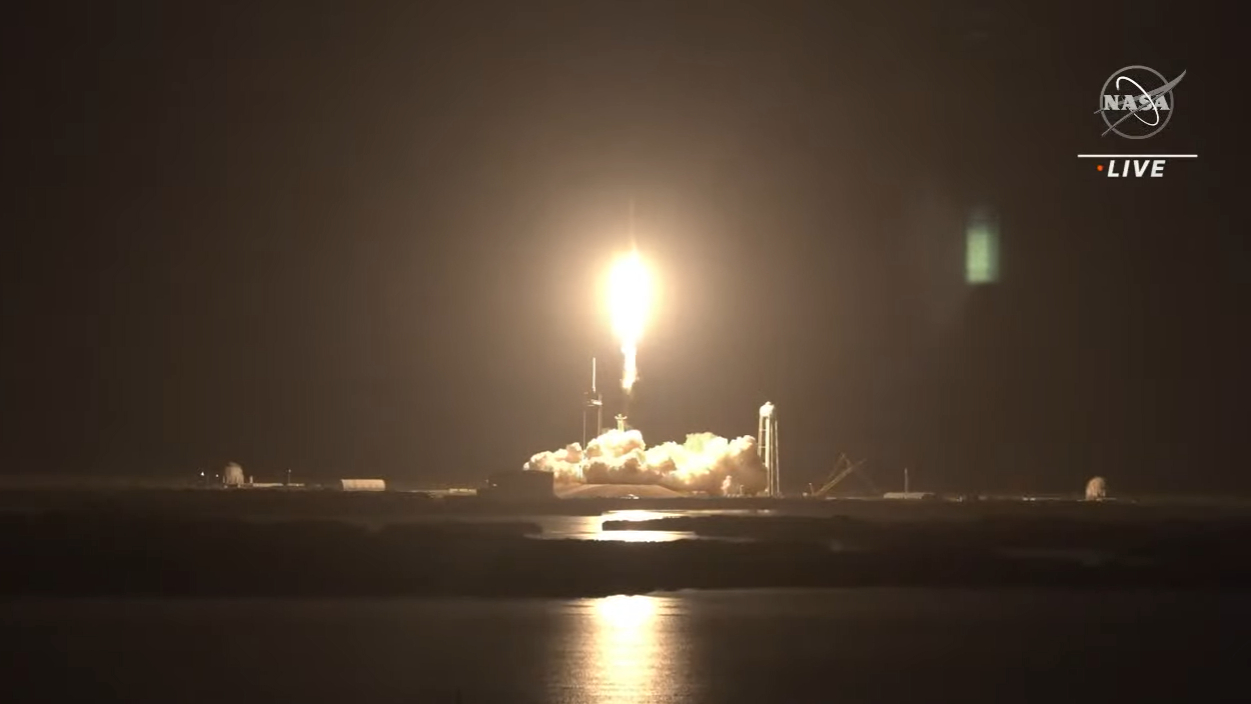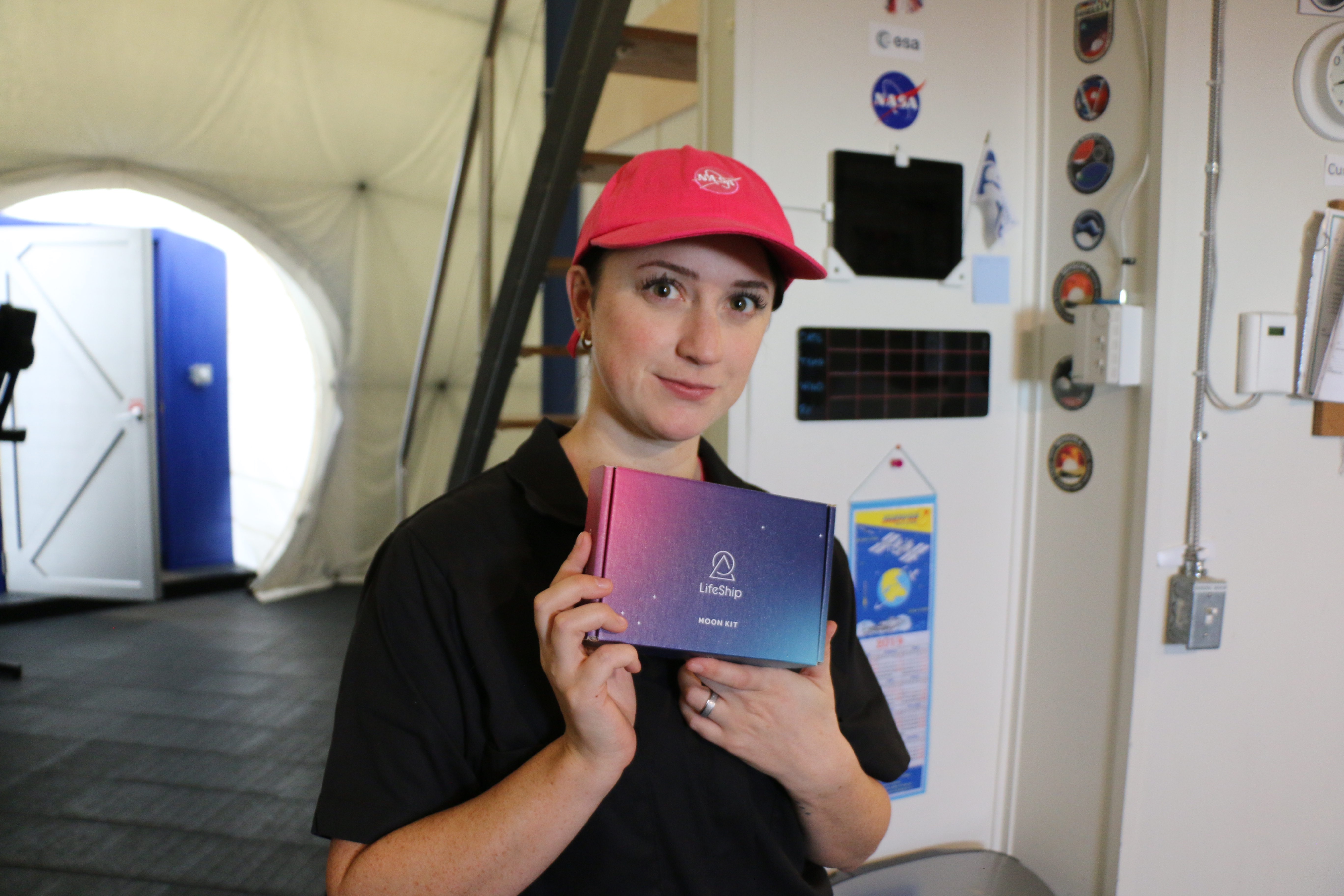My DNA just launched to orbit with SpaceX's Crew-4 mission
And my DNA will eventually make its way to the moon, too, if all goes according to plan.

Strapped into a SpaceX Dragon capsule, a crew of four astronauts blasted off from Earth this morning (April 27) on a mission to the International Space Station. Also on board? My DNA.
This morning's launch saw SpaceX's Crew-4 mission lift off from NASA's Kennedy Space Center in Florida, sending four astronauts to the orbiting lab for a six-month stay. In addition to the astronauts on board, a peculiar payload was stashed on the Dragon: a biobank chock-full of DNA from 500 different species and over 2,000 different humans ... including me!
The collection of DNA comes from LifeShip, a space and genomics company that aims to send this DNA not just to the space station but, one day soon, to the moon.
Live updates: SpaceX's Crew-4 astronaut mission for NASA
In pictures: Amazing photos of SpaceX's Crew-4 launch

In 2020, I completed a two-week simulated, or analog, Mars mission at the HI-SEAS (Hawaii Space Exploration Analog and Simulation) facility in Hawai'i during which my five crewmates and I lived and worked in a "Martian" habitat as if we were truly on the Red Planet. During that mission, we all sent a sample of our DNA in to LifeShip.
LifeShip opened its microscopic doors to allow people to send in DNA to be included in future missions to space. The ultimate planned destination for these samples is the moon, with a lunar launch scheduled for 2023, according to the company's website.
What did that look like for us? Well, simply (and grossly) put, we spit into tiny plastic tubes. (The system now involves just a simple cheek swab.) Eventually, our little tubes made it back to LifeShip, where our DNA was extracted from the sample and preserved in synthetic amber, "a polymer inspired by nature," the website reads.
Get the Space.com Newsletter
Breaking space news, the latest updates on rocket launches, skywatching events and more!
The preserved DNA then "goes in a capsule that contains a biobank with DNA from diverse plant and animal species, as well as an archive of human knowledge and culture compiled by our partners at Arch Mission Foundation," the website adds.
The capsule is made with radiation shielding, and thousands of copies of the DNA will be included. LifeShip acknowledges that some genetic material will degrade over time, but it hopes these steps will ensure that at least fragments could remain far into the future and be pieced back together. Additionally, the capsule is sterilized and falls under planetary protection guidelines that are in place to prevent space contamination, the company shared on its website.
That capsule flew to space this morning alongside the crew and other payload items with Crew-4. "It's humanity's first off-world genetic seed bank!" LifeShip wrote in an emailed statement, adding that sending the DNA to the space station is a "demonstration mission" ahead of sending the DNA to the moon.
The company ultimately plans to send its "genetic time capsule" to the moon's surface aboard the Astrobotic lunar lander mission that is set to launch aboard a United Launch Alliance Vulcan rocket under a contract with NASA to deliver payloads to the lunar surface.
The company has collected enough DNA from its participants to send multiple missions (including backup, if one were to fail), it shared in the emailed statement. (LifeShip also states on its website that the company "won't sequence your DNA, sell your DNA, share your DNA or otherwise use your DNA.")
While LifeShip plans for their future moon-bound DNA capsule (which will have the same DNA specimens as this launch) to stay on the moon forever, the just-launched capsule will one day return to Earth with a future crew.
One big question I and others have had in thinking about sending DNA off-Earth is: why?
LifeShip's reasoning, the company states on its website, is that "because the genetic time capsule is designed for the far future, none of us will ever actually know for sure. Perhaps it will be found by a future civilization and used to recreate our planet as it is today. Our descendants could carry your code to the stars to seed a brand-new world. While this is all theoretical, we believe it is worth saving our genetic blueprints of life on Earth for generations in the future."
For me, personally? Simply, my DNA eventually landing on the moon seemed like a strange adventure I just couldn't pass up.
Email Chelsea Gohd at cgohd@space.com or follow her on Twitter @chelsea_gohd. Follow us on Twitter @Spacedotcom and on Facebook.
Join our Space Forums to keep talking space on the latest missions, night sky and more! And if you have a news tip, correction or comment, let us know at: community@space.com.

Chelsea “Foxanne” Gohd joined Space.com in 2018 and is now a Senior Writer, writing about everything from climate change to planetary science and human spaceflight in both articles and on-camera in videos. With a degree in Public Health and biological sciences, Chelsea has written and worked for institutions including the American Museum of Natural History, Scientific American, Discover Magazine Blog, Astronomy Magazine and Live Science. When not writing, editing or filming something space-y, Chelsea "Foxanne" Gohd is writing music and performing as Foxanne, even launching a song to space in 2021 with Inspiration4. You can follow her on Twitter @chelsea_gohd and @foxannemusic.









